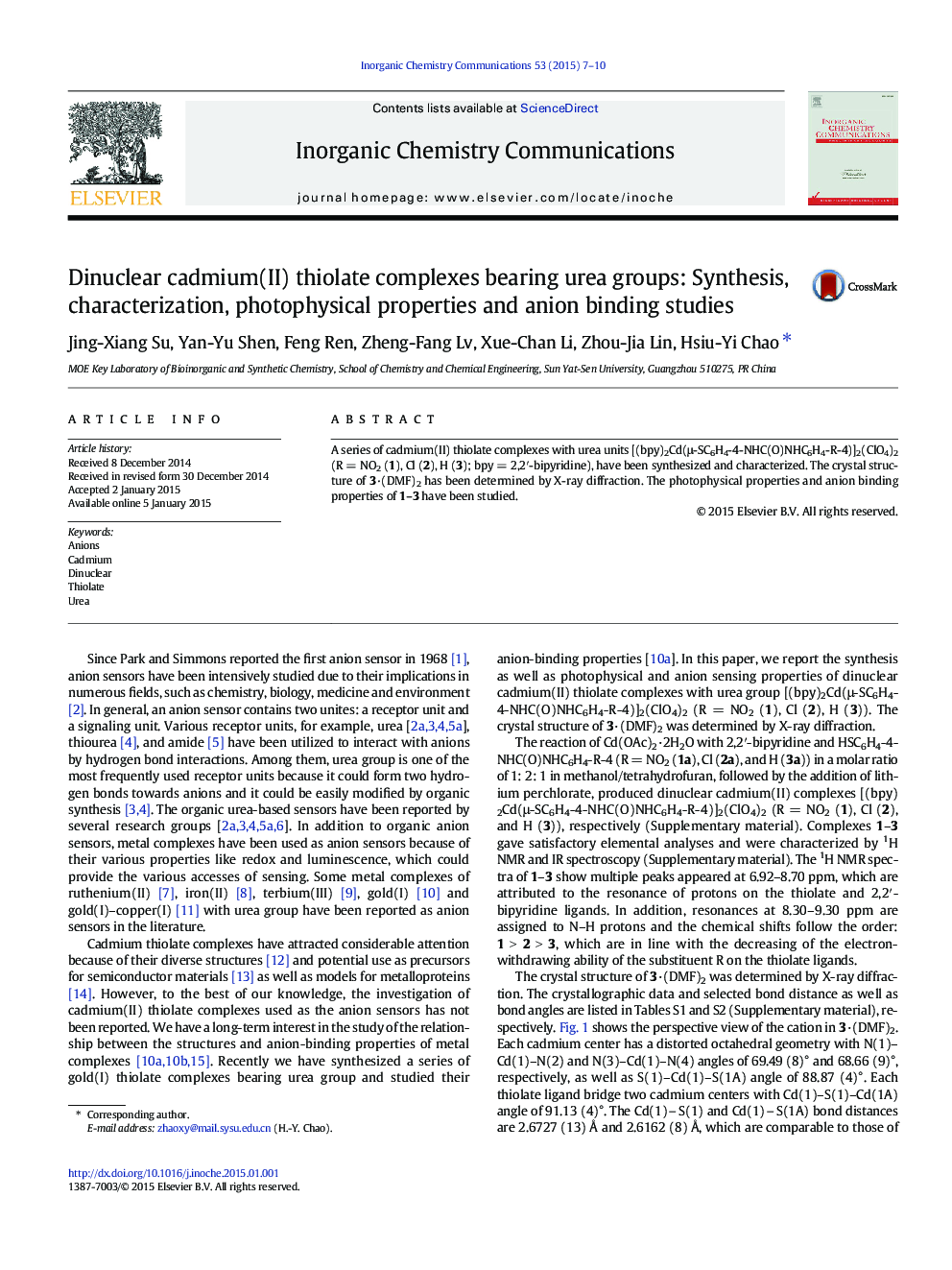| Article ID | Journal | Published Year | Pages | File Type |
|---|---|---|---|---|
| 1301567 | Inorganic Chemistry Communications | 2015 | 4 Pages |
•Three cadmium(II) thiolate complexes with urea groups have been synthesized.•The crystal structure of 3·(DMF)2 has been determined by X-ray diffraction.•The binding constants for 1 with anions in DMSO follow the order: SO42 − > AcO− > H2PO4−.•Complex 1 shows the selective color change towards F− in DMSO.
A series of cadmium(II) thiolate complexes with urea units [(bpy)2Cd(μ-SC6H4-4-NHC(O)NHC6H4-R-4)]2(ClO4)2 (R = NO2 (1), Cl (2), H (3); bpy = 2,2′-bipyridine), have been synthesized and characterized. The crystal structure of 3·(DMF)2 has been determined by X-ray diffraction. The photophysical properties and anion binding properties of 1–3 have been studied.
Graphical abstractThree dinuclear cadmium(II) thiolate complexes with urea units [(bpy)2Cd(μ-SC6H4-4-NHC(O)NHC6H4-R-4)]2(ClO4)2 (R = NO2 (1), Cl (2), H (3); bpy = 2,2′-bipyridine), have been synthesized. The selective color change of 1 towards F− in DMSO provides an access for naked eye detection of F−.Figure optionsDownload full-size imageDownload as PowerPoint slide
